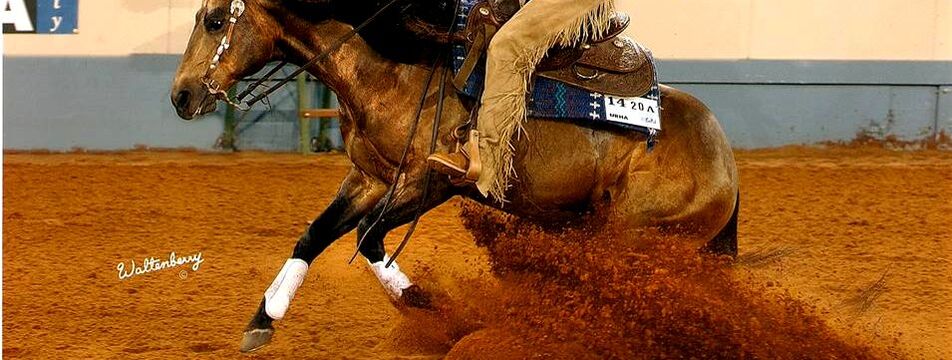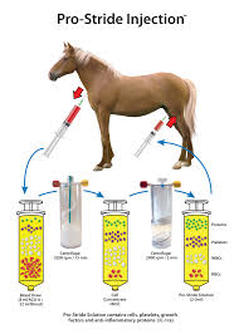Equine Regenerative Medicine Abstracts
Buzz word alert...
You may have heard or read about IRAP, PRP, Prostride, Noltrex or Stem Cells in conversation or featured in horse magazines. But what does that mean for you or your horse?
They represent the majority of Regenerative Medicine products currently available. Once a lesion or problem has been identified and proven to be the issue that is causing pain, regenerative products may become part of the therapeutic plan.
The general principle is to use the patients own blood or fat to concentrate naturally made factors that promote healing. Each of the products seem to produce favorable results for certain types of lesions or pathology.
Here are abstracts about what they are, what they are used for and the clinical procedure
They represent the majority of Regenerative Medicine products currently available. Once a lesion or problem has been identified and proven to be the issue that is causing pain, regenerative products may become part of the therapeutic plan.
The general principle is to use the patients own blood or fat to concentrate naturally made factors that promote healing. Each of the products seem to produce favorable results for certain types of lesions or pathology.
Here are abstracts about what they are, what they are used for and the clinical procedure
Equine IRAP (Interleukin-1 Receptor Antagonist Protein)
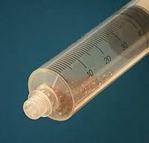
What is it?
IRAP (Orthokine) was originally developed in Europe, and has been used extensively in Germany. IRAP (Interleukin-1 Receptor Antagonist Protein) is an anti-inflammatory protein found in the patients own blood that counteracts the destructive effects of inflammatory proteins such as Interleukin-1 (IL-1) within the inflamed joint.
What is it used for?
Indications for use of IRAP/Orthokine in the joint include horses with a well defined synovitis/capsulitis, particularly those horses that do not respond well to conventional anti-inflammatory joint medication and horses that have had arthroscopic surgery and have been found to have focal cartilage diseases.
Orthokine is NOT recommended for use in tendon sheaths or bursae, in joints where there are bone fragments, fractures, meniscal or ligamentous injury unless it has been successfully treated arthroscopically, in bone cysts, or in horses with advanced osteoarthritis (low success rate).
What is the procedure?
Levels of IRAP and other anti-inflammatory proteins in the blood can be increased and produced for joint injection by incubating a 50ml sample of blood from your horse for 24 hours. The syringe contains glass beads coated with a substance to enhance production of anti-inflammatory proteins including IRAP. The syringe must reach the incubator as soon as possible after the blood has been harvested from your horse. After 24 hours, the syringe is centrifuged, and the serum collected. The amount of serum collected from each 50ml syringe of blood is usually between 20-25ml. This yields 5-6 doses of IRAP, but the number of doses available for use from each collection is dependent on the specific joint.
Once the serum has been harvested, it is filtered and then frozen in single dose aliquots. We then submit a small sample of each batch of serum for microbial culture to ensure to the best of our ability that that product that is released for joint injection is sterile. Injections are released for use about 8 days after original blood collection. Injections are kept frozen until immediately before use. Once thawed and immediately before they are used, each individual dose is again sterile filtered.
In general 2-3 treatments of the joint are performed, at 8-14 day intervals. The volume injected at each treatment is 1-8ml, depending on the joint. After injection, we routinely bandage the joint if possible for 2 days, and the horse should be kept on 3 days of stall rest, followed by 10 days of hand-walking (30-45 minutes). Once the course of injections and the final hand-walking period is completed, horses should receive one week of ridden walk exercise, followed by one week of ridden walk and trot, before returning gradually to regular training programs.
The joint should be monitored carefully for heat, swelling or increase in lameness. If you notice any of these signs, please contact us immediately. Adverse effects of this product have not been reported after extensive use in people and horses in Europe, though if you have any concerns about your horse after injection you should contact us directly.
IRAP (Orthokine) was originally developed in Europe, and has been used extensively in Germany. IRAP (Interleukin-1 Receptor Antagonist Protein) is an anti-inflammatory protein found in the patients own blood that counteracts the destructive effects of inflammatory proteins such as Interleukin-1 (IL-1) within the inflamed joint.
What is it used for?
Indications for use of IRAP/Orthokine in the joint include horses with a well defined synovitis/capsulitis, particularly those horses that do not respond well to conventional anti-inflammatory joint medication and horses that have had arthroscopic surgery and have been found to have focal cartilage diseases.
Orthokine is NOT recommended for use in tendon sheaths or bursae, in joints where there are bone fragments, fractures, meniscal or ligamentous injury unless it has been successfully treated arthroscopically, in bone cysts, or in horses with advanced osteoarthritis (low success rate).
What is the procedure?
Levels of IRAP and other anti-inflammatory proteins in the blood can be increased and produced for joint injection by incubating a 50ml sample of blood from your horse for 24 hours. The syringe contains glass beads coated with a substance to enhance production of anti-inflammatory proteins including IRAP. The syringe must reach the incubator as soon as possible after the blood has been harvested from your horse. After 24 hours, the syringe is centrifuged, and the serum collected. The amount of serum collected from each 50ml syringe of blood is usually between 20-25ml. This yields 5-6 doses of IRAP, but the number of doses available for use from each collection is dependent on the specific joint.
Once the serum has been harvested, it is filtered and then frozen in single dose aliquots. We then submit a small sample of each batch of serum for microbial culture to ensure to the best of our ability that that product that is released for joint injection is sterile. Injections are released for use about 8 days after original blood collection. Injections are kept frozen until immediately before use. Once thawed and immediately before they are used, each individual dose is again sterile filtered.
In general 2-3 treatments of the joint are performed, at 8-14 day intervals. The volume injected at each treatment is 1-8ml, depending on the joint. After injection, we routinely bandage the joint if possible for 2 days, and the horse should be kept on 3 days of stall rest, followed by 10 days of hand-walking (30-45 minutes). Once the course of injections and the final hand-walking period is completed, horses should receive one week of ridden walk exercise, followed by one week of ridden walk and trot, before returning gradually to regular training programs.
The joint should be monitored carefully for heat, swelling or increase in lameness. If you notice any of these signs, please contact us immediately. Adverse effects of this product have not been reported after extensive use in people and horses in Europe, though if you have any concerns about your horse after injection you should contact us directly.
Prostride
|
Pro-Stride APS is a proprietary system whose output produces a concentrated solution of cells, platelets, growth factors, and anti-inflammatory proteins (including IL-1ra). <20 minute blood processing
Clinically demonstrated pain relief at 52 weeks following a single injection*, Natural - Drug-Free Interleukin-1, also known as IL-1, and tumor necrosis factor alpha, also known as TNF-alpha, are the key pro-inflammatory proteins called cytokines which need to be blocked from damaging the tissue. These inflammatory cytokines bind to the cell surface receptors on the cartilage and start the process of cartilage breakdown which ultimately leads to joint pain and damage. There are several naturally occurring inhibitors (anti-inflammatory proteins) of the pro-inflammatory cytokines IL-1 and TNF-alpha. These include the interleukin-1 receptor antagonist protein (IRAP), also known as IL-1ra, SIL-1r, also known as Soluble interleukin-1 receptor and STNF-rs, known as Soluble tumor necrosis factor receptors. All of these are highly concentrated within Pro-Stride APS. Pro-Stride does not require an incubation period Pro-Stride's output is not an autologous conditioned serum (ACS) |
Equine PRP (Platelet Rich Plasma)
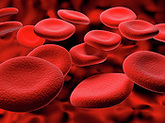
What is PRP?
PRP, Platelet Rich Plasma, is the platelet concentrated plasma obtained from anti-coagulated whole blood via a centrifugation process. The platelet concentration needs to be at least four times that of whole blood to be considered “platelet rich”.
What is it used for?
PRP is being used clinically by equine veterinarians for tendon and ligament healing and granulation of tissue defects. Normal PRP therapy is recommended for both recent tendon and ligament injuries and those injuries that have not healed using traditional rest and controlled exercise. Recent injuries can be injected 2-4 weeks after occurrence. For horses with severe joint disease (osteoarthritis or osteochondrosis) that are no longer responding to traditional joint therapy (injection with hyaluronic acid and corticosteroids). Three treatments at two-week intervals are recommended.
How does it work?
When the platelets are injected into the lesion, they are activated by exposure of the damaged tissue. The platelets release their granular contents which include such anabolic growth factors such as platelet-derived growth factor (PDGF), transforming growth factor-ß (TGF-ß) and vascular endothelial growth factor (VEGF). These growth factors stimulate progenitor cells to migrate to the wound, and help with wound fibroblast expansion and wound matrix production.
What is the procedure?
Making PRP is a simple procedure that takes only a few minutes using the Vet-Stem GenesisCS Component Concentrating System. 52 ml of whole blood is drawn aseptically from the horse with a 60 ml syringe that has been preloaded with either 8 ml of CPD or ACD anticoagulant. The mixture is transferred to the special centrifugation tubes and processed stall side. The PRP is ready in minutes to be injected back into the same horse’s lesion.
There is another collection procedure that requires bone marrow as the source for stem cells. If a horse is going to surgery and PRP is needed for joint repair, that is a much more complex procedure and takes approximately 3 weeks to culture cells before they are ready to be used. Bone marrow is retrieved through the sternum in a horse that is sedated. This is a minor surgical procedure. Bone marrow is delivered to Cornell University, where they prepare the samples for use.
PRP, Platelet Rich Plasma, is the platelet concentrated plasma obtained from anti-coagulated whole blood via a centrifugation process. The platelet concentration needs to be at least four times that of whole blood to be considered “platelet rich”.
What is it used for?
PRP is being used clinically by equine veterinarians for tendon and ligament healing and granulation of tissue defects. Normal PRP therapy is recommended for both recent tendon and ligament injuries and those injuries that have not healed using traditional rest and controlled exercise. Recent injuries can be injected 2-4 weeks after occurrence. For horses with severe joint disease (osteoarthritis or osteochondrosis) that are no longer responding to traditional joint therapy (injection with hyaluronic acid and corticosteroids). Three treatments at two-week intervals are recommended.
How does it work?
When the platelets are injected into the lesion, they are activated by exposure of the damaged tissue. The platelets release their granular contents which include such anabolic growth factors such as platelet-derived growth factor (PDGF), transforming growth factor-ß (TGF-ß) and vascular endothelial growth factor (VEGF). These growth factors stimulate progenitor cells to migrate to the wound, and help with wound fibroblast expansion and wound matrix production.
What is the procedure?
Making PRP is a simple procedure that takes only a few minutes using the Vet-Stem GenesisCS Component Concentrating System. 52 ml of whole blood is drawn aseptically from the horse with a 60 ml syringe that has been preloaded with either 8 ml of CPD or ACD anticoagulant. The mixture is transferred to the special centrifugation tubes and processed stall side. The PRP is ready in minutes to be injected back into the same horse’s lesion.
There is another collection procedure that requires bone marrow as the source for stem cells. If a horse is going to surgery and PRP is needed for joint repair, that is a much more complex procedure and takes approximately 3 weeks to culture cells before they are ready to be used. Bone marrow is retrieved through the sternum in a horse that is sedated. This is a minor surgical procedure. Bone marrow is delivered to Cornell University, where they prepare the samples for use.
Equine Stem Cells
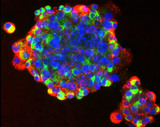
What are they?
Stem cells are derived from the animal's own fat and contain high yield of mesenchymal stem cells as well as other regenerative cells that produce cytokines and growth factors. They are able to differentiate into multiple cell types and produce extracellular (structural) matrix that allows healing to get started. Stem Cells harvested for use in equine regenerative medicine are adult adipose (fat)-derived cells. The fat collection procedure delivers significantly more regenerative stem cells than a fresh bone marrow procedure.
What are they used for?
Acute tendon and ligament injuries. Recent independent studies have demonstrated improved healing and fiber patterns. Ultrasound images show a rapid filling of the injured site and elegant tendon regeneration.
The Treatment of chronic degenerative (osteoarthritis) joint disease with VSRCs has proven to be effective even in chronic cases that are non-responsive to traditional therapies. Clinical improvements have ranged from modest improvement to life-saving. In cases of moderate to severe degenerative joint disease, Vet-Stem-treated horses have shown clinical improvement for up to 12 months and owner satisfaction above 85%.
What they are NOT used for
Vet-Stem believes there are certain conditions in which stem cells will have little or no value including:
What is the procedure?
A small amount of fat is collected typically from (2) three inch incisions made on the rump of the horse who is under sedation with local anesthesia. The fat sample is shipped overnight via FedEx to the Vet-Stem laboratory for processing, isolating, and concentrating of stem cells. The cells are then returned for implantation at the site of the injury or intravenously within 48 hours of collection.
Stem cells are derived from the animal's own fat and contain high yield of mesenchymal stem cells as well as other regenerative cells that produce cytokines and growth factors. They are able to differentiate into multiple cell types and produce extracellular (structural) matrix that allows healing to get started. Stem Cells harvested for use in equine regenerative medicine are adult adipose (fat)-derived cells. The fat collection procedure delivers significantly more regenerative stem cells than a fresh bone marrow procedure.
What are they used for?
Acute tendon and ligament injuries. Recent independent studies have demonstrated improved healing and fiber patterns. Ultrasound images show a rapid filling of the injured site and elegant tendon regeneration.
The Treatment of chronic degenerative (osteoarthritis) joint disease with VSRCs has proven to be effective even in chronic cases that are non-responsive to traditional therapies. Clinical improvements have ranged from modest improvement to life-saving. In cases of moderate to severe degenerative joint disease, Vet-Stem-treated horses have shown clinical improvement for up to 12 months and owner satisfaction above 85%.
What they are NOT used for
Vet-Stem believes there are certain conditions in which stem cells will have little or no value including:
- Degenerative suspensory ligament desmitis
- When a soft-tissue (tendon/ligament) lesion is not detected by current imaging modalities
- When there is an infection present in the injured area
What is the procedure?
A small amount of fat is collected typically from (2) three inch incisions made on the rump of the horse who is under sedation with local anesthesia. The fat sample is shipped overnight via FedEx to the Vet-Stem laboratory for processing, isolating, and concentrating of stem cells. The cells are then returned for implantation at the site of the injury or intravenously within 48 hours of collection.
What is NOLTREX?
Noltrex®Vet maintains or re-establishes healthy joint lubrication in horses. Other products, such as hyaluronic acid, act to supplement the endrogenous production of synovial fluid, the body’s natural lubricant. The supplementation of low levels of hyaluronic acid promotes the natural production of healthy synovial fluid.
Noltrex®Vet is a synthetic hydrogel that provides a direct lubrication substitute for compromised joint lubrication. It is designed to mimic the physical properties of synovial fluid and provides an additional layer of joint protection where it acts as a boundary lubricant. The product remains in the joint for many weeks and is eventually broken-down and removed from the body.
Hyaluronic acid and Noltrex®Vet polyacrylamide are both viscous hydrogels – but that’s where the similarities end.
Hyaluronic acid is a critical biologic component of synovial fluid, the body’s natural joint lubricant. Treatment with hyaluronic acid is intended to supplement this critical element, and promote the production of normal, endogenous synovial fluid. Other effects of hyaluronic acid include the induction of proteoglycans, regulation of cellular function, and anti-inflammatory properties.
Noltrex®Vet polyacrylamide is a synthetic, non-soluble hydrogel that is a lubricant and does not need to be metabolized to have an effect. It is a substitute for the compromised synovial fluid to improve joint function.
Therefore, hyaluronic acid is a visco-supplement that stimulates the endogenous production of lubricating fluids whereas Noltrex®Vet acts as an exogenous, synthetic visco-substitute.
Ultrasound guided injection of Noltrex can be done in about 30 minutes. A second injection can be administered in 4 weeks if needed.
Noltrex®Vet maintains or re-establishes healthy joint lubrication in horses. Other products, such as hyaluronic acid, act to supplement the endrogenous production of synovial fluid, the body’s natural lubricant. The supplementation of low levels of hyaluronic acid promotes the natural production of healthy synovial fluid.
Noltrex®Vet is a synthetic hydrogel that provides a direct lubrication substitute for compromised joint lubrication. It is designed to mimic the physical properties of synovial fluid and provides an additional layer of joint protection where it acts as a boundary lubricant. The product remains in the joint for many weeks and is eventually broken-down and removed from the body.
Hyaluronic acid and Noltrex®Vet polyacrylamide are both viscous hydrogels – but that’s where the similarities end.
Hyaluronic acid is a critical biologic component of synovial fluid, the body’s natural joint lubricant. Treatment with hyaluronic acid is intended to supplement this critical element, and promote the production of normal, endogenous synovial fluid. Other effects of hyaluronic acid include the induction of proteoglycans, regulation of cellular function, and anti-inflammatory properties.
Noltrex®Vet polyacrylamide is a synthetic, non-soluble hydrogel that is a lubricant and does not need to be metabolized to have an effect. It is a substitute for the compromised synovial fluid to improve joint function.
Therefore, hyaluronic acid is a visco-supplement that stimulates the endogenous production of lubricating fluids whereas Noltrex®Vet acts as an exogenous, synthetic visco-substitute.
Ultrasound guided injection of Noltrex can be done in about 30 minutes. A second injection can be administered in 4 weeks if needed.
How can Morgan Equine help your horse?
We are able to facilitate IRAP, PRP, Prostride, Noltrex and Stem Cell regenerative medicine treatments in our hospital.
All of these products take time to collect and prepare prior to administering. Some products take up to 3 weeks to concentrate before the initial injection. Many also require several injections to complete the protocol. That is why they tend to be more expensive than a conservative approach. Some horses have done extremely well with these products. Email Dr. Morgan if you have more specific questions after reading the abstracts.
All of these products take time to collect and prepare prior to administering. Some products take up to 3 weeks to concentrate before the initial injection. Many also require several injections to complete the protocol. That is why they tend to be more expensive than a conservative approach. Some horses have done extremely well with these products. Email Dr. Morgan if you have more specific questions after reading the abstracts.
